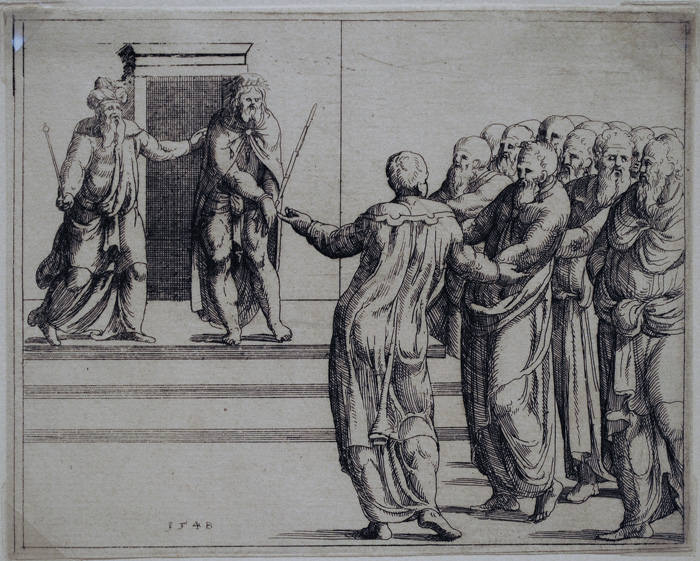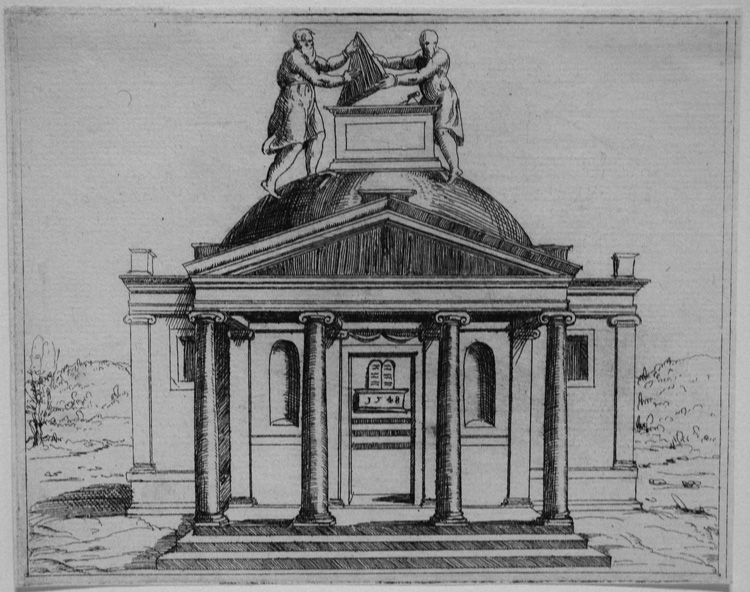Click image for BBB rating
See our Privacy Policy
cool="cool" width="787" height="2593" border="0" cellpadding="0" cellspacing="0" gridx="16" showgridx="showgridx" usegridx="usegridx" gridy="16" showgridy="showgridy" usegridy="usegridy" bgcolor="#99ccff">
|
 |
|
|
|
|
|
|
Welcome to Spaightwood Galleries, Inc.
120 Main Street, Upton MA 01568-6193; 800-809-3343; email: spaightwood@gmail.com
You can follow us on Facebook at http://www.facebook.com/andrew.weiner.16
and http://www.facebook.com/pages/Spaightwood-Galleries-Inc/122951564441757
Old Master Prints: Augustin Hirschvogel (Nuremberg 1503-1553 Vienna)
|
|
|
|
Augustin Hirschvogel was the younger son and yonger brother of Veit Hirschvogel, both of whom, like hium, were artists, initially working in Nuremberg. After Nuremberg accepted the Reformation, their major specialty–glass painting–was no longer allowed in Nuremberg's churches. Augustin, however, was also an etcher, a cartographer, and a mathematician, avenuses of employment still open to him. He was proficient at pen-and-ink drawings, over 60 of which survive from his early Nuremberg period (to 1536), and included a series of hunting scenes for stained-glass roundels, done in a style that showed his indebtedness to Albrecht Dürer's drawing style (as did the drawings of Hans Sebald Beham and Georg Pencz). After a seven-year stay in Ljublana, durinmg which he produced maps of the Turkish borders and Austria, he returned to Nuremberg. During this time he also made etchings for a book containing 37 etchings of geormetric and perspectival constructions, perhaps under the influence of Dürer's books on perspective illustrated with woodcuts. In 1544, Hirschvogel moved to Vienna where he worked as a cartographer, mathematician, stained-glass painter, and etcher. He produced scale drawings of fortifications for the city of Vienna, whence he was sent to Ferdinand I in Prague to explain his system of fortifications and his trigonometric system of triangulation. Ferdinand gave him a pension of 100 gulden for life and sent him off to show his brother, the Emperor Charles V, how this worked. During the last decade of his life, he made most of the 300 etchings he created during his life. He was also the first etcher to use copper (instead of iron) regularly and to use multiple bites in creating his etchings. The largest single group of these were 113 Old and New Testament scenes (seee below) for the Hungarian reformer Peter Perényi (1502-1548) to illustrate his Konkordanz or Concordance of Old and New Testament scenes. In adddition to Dürer and his former pupils, Hirschvogel was influenced by Agostino da Musi (c. 1490-after 1536) and the school of Raphael. He also did a number of landscapes reflecting the influence of Albrecht Altdorfer and Wolfgang Huber. His etchings are illustrated in The Illustrated Bartsch 18, ed. Jane S. Peters (NY: Abaris Boks, 1982) and in The New Hollstein. I have taken most of the information above from the article on Hirschvogel in The Grove Encyclopedia of Northern Renaissance Art, ed Gordon Campbell (Oxford: Oxford University Press, 2009), 3 volumes, here at II, 255-55. The standard monograph on Hirschvogel is by Karl Schwartz: Augustin Hirschvogel, 2 vols. (Berlin, 1917, reprinted in 1971: NY: Collectors Editions), which published a separate volume of plates accompanying Schwartz's text. I will refer to both Bartsch and the Schwartz numbers. Benjamin Rifkin, who provides an introduction to the plate volume, says that "The captions to the Konkordanz plates were apparently composed prior to the illustrations and added to Hisrchvogel's etchings in the second state" (p. 10). Since our two etchings have no captions, that may mean that they are first-state impressions.
|
|
|
 |
|
|
|
Ecce Homo Original etching, 1546 (Bartsch 1.61 (paired with B 1 60: Moses veils his face to speak to the people of Israel (Exodus 34). The text that relates to this image is John 19: 5-7: "So Jesus came out, wearing the crown of thorns and the purple robe. Pilate said to them, ‘Here is the man!’ When the chief priests and the police saw him, they shouted, ‘Crucify him! Crucify him!’ Pilate said to them, ‘Take him yourselves and crucify him; I find no case against him.’ The Jews answered him, ‘We have a law, and according to that law he ought to die because he has claimed to be the Son of God.’" Dated 1548 lower left. Thread margins. Image size: 114x144mm. Price: Please call or email for current pricing information.
|
|
|
|
 |
|
|
|
The Rejected Stone becomes the Chief Cornerstone. Original etching, 1546 (Bartsch 1.101 (paired with B 1 102: The Transfiguration (Mark 9). The texts that are related to this image are Psalm 2: 8 and Isaiah 28: 16-17: "See, I am laying in Zion a foundation stone, a tested stone, a precious cornerstone, a sure foundation: ‘One who trusts will not panic.’ And I will make justice the line, and righteousness the plummet; hail will sweep away the refuge of lies, and waters will overwhelm the shelter." Dated 1548 below the Tables of the Law between the central columns. Thread margins. Image size: 114x144mm. Price: Please call or email for current pricing information.
|
|
|
|
Spaightwood Galleries, Inc.
To purchase, call us at 1-800-809-3343 (1-508-529-2511 in Upton MA & vicinity) or send an email to spaightwood@gmail.com.
We accept AmericanExpress, DiscoverCard, MasterCard, and Visa.
We also accept wire transfers and paypal.
For directions and visiting information, please call. We are, of course, always available over the web and by telephone (see above for contact information). Click the following for links to past shows and artists. For a visual tour of the gallery, please click here. For information about Andy Weiner and Sonja Hansard-Weiner, please click here. For a list of special offers currently available, see Specials.
All works are sold with an unconditional guarantee of authenticity (as described in our website listing).
Go back to the top of this page.
Visiting hours: Saturday 10:00 am to 5:00 pm and Sunday noon to 6:00 pm and other times by arrangement.
Please call to confirm your visit. Browsers and guests are welcome.
|
|
|
|
|
|
|
|
|
|
|
|
|
|
|
|
|
|
|
|
|
|
|
|

